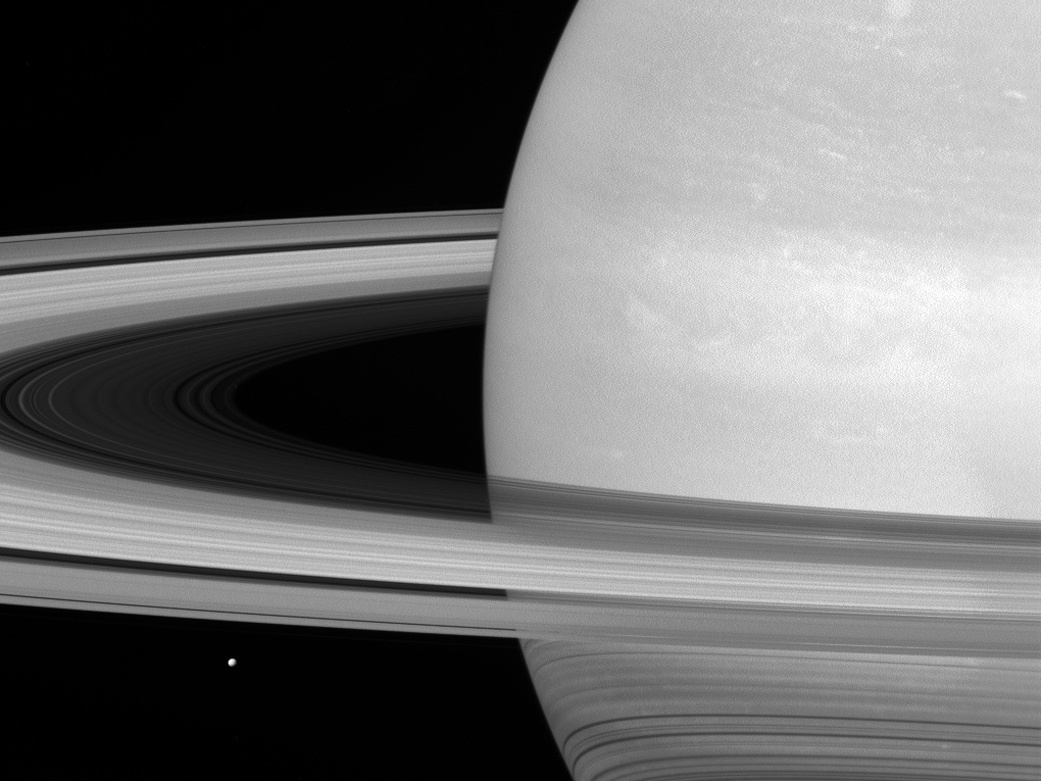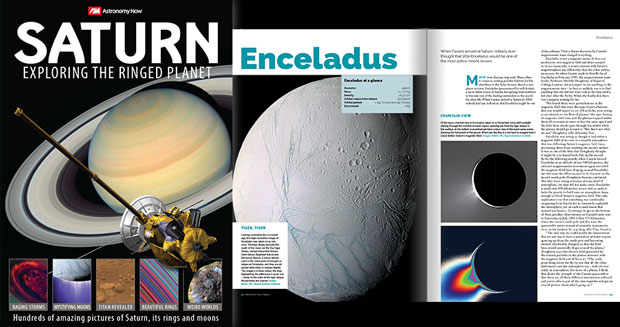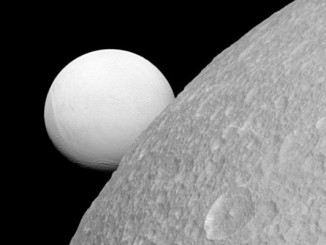
The rings, which are made of small, icy particles spread over a vast area, are extremely thin — generally no thicker than the height of a house. Thus, despite their giant proportions, the rings contain a surprisingly small amount of material.
Mimas is 246 miles (396 kilometres) wide.
This view looks toward the sunlit side of the rings from about 6 degrees above the ring plane. The image was taken in red light with the Cassini spacecraft’s wide-angle camera on 21 July 2016.
The view was obtained at a distance of approximately 564,000 miles (907,000 kilometres) from Saturn and at a Sun-Saturn-spacecraft, or phase, angle of 31 degrees. Image scale is 34 miles (54 kilometres) per pixel.
Saturn: Exploring the Ringed Planet
Find out more about Saturn and its moons in this 196-page special edition from Astronomy Now. [geot exclude_region=”US” ]Order from our online store.[/geot][geot region=”US” ]Order from our online store.[/geot]




